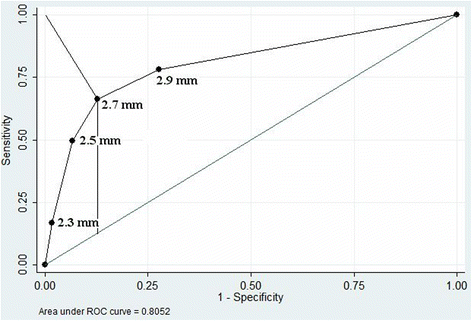Association between vertebral artery hypoplasia and posterior circulation stroke
- PMID: 27461465
- PMCID: PMC4962415
- DOI: 10.1186/s12883-016-0644-x
Association between vertebral artery hypoplasia and posterior circulation stroke
Abstract
Background: The clinical significance of vertebral artery (VA) hypoplasia is under discussion. The aim of this retrospective study is to evaluate a hypothesis of a possible causal link between VA hypoplasia (VAH) and the incidence of posterior circulation stroke (PCS) or TIA depending on the degree of VAH and vascular risk factors.
Methods: A total of 367 symptomatic (PCS or TIA) and 742 asymptomatic subjects, were selected to participate in the study. The extracranial arteries were examined by ultrasound. VAH was defined as VA diameter in entire course <3 mm, although different degrees of VAH were examined. All the symptomatic patients underwent MRI or CT and MRA or CTA. The study assessed all the subjects in terms of their age, gender, co-risk factors (hypertension, hyperlipidemia, diabetes mellitus, peripheral arterial diseases, atrial fibrillation, myocardial infarction), as well as height of 180 healthy volunteers.
Results: VAH, regardless of the degree of severity, was more frequent in patients with non-cardioembolic PCS or TIA rather than in asymptomatic patients. The increasing degree of hypoplasia in patients under 65 years of age was a predictor of PCS/TIA, OR = 1.8, 95% CI: 1.3-2.5; p < 0.001. In subjects older than 65 years of age, this association failed. Only in patients aged under 50, VAH was significantly more frequent in the TIA group rather than in the PCS group (68.2% and 50%, respectively; p = 0.047). The optimal VA diameter cutoff point separating PCS/TIA and asymptomatic group was 2.7 mm. This value may vary in different populations, because VA diameter showed a significant dependence on sex as well as anthropometric parameters (height). With the increasing degree of VAH, the likelihood of the occurrence of the distal VA part stenosis/occlusion was growing (OR = 1.6, 95% CI: 1.2-2.1; p = 0.002). The distal VA stenosis/occlusion was likely to occur where the VA diameter was <2.2 mm.
Conclusions: The impact of the VAH on PCS/TIA and its pathogenetic mechanism was significantly influenced by age. The cutoff point of VA diameter, affecting the occurrence of PCS in different populations may vary because VA diameter depends on gender and anthropometric parameters (especially height).
Keywords: Age; Anthropometry; Gender; Hypoplasia; Occlusion; Stroke; Vertebral artery.
Figures





References
-
- Chuang YM, Chan L, Wu HM, Lee SP, Chu YT. The clinical relevance of vertebral artery hypoplasia. Acta Neurologica Taiwanica. 2012;21(1):1–7. - PubMed
Publication types
MeSH terms
LinkOut - more resources
Full Text Sources
Other Literature Sources
Medical

